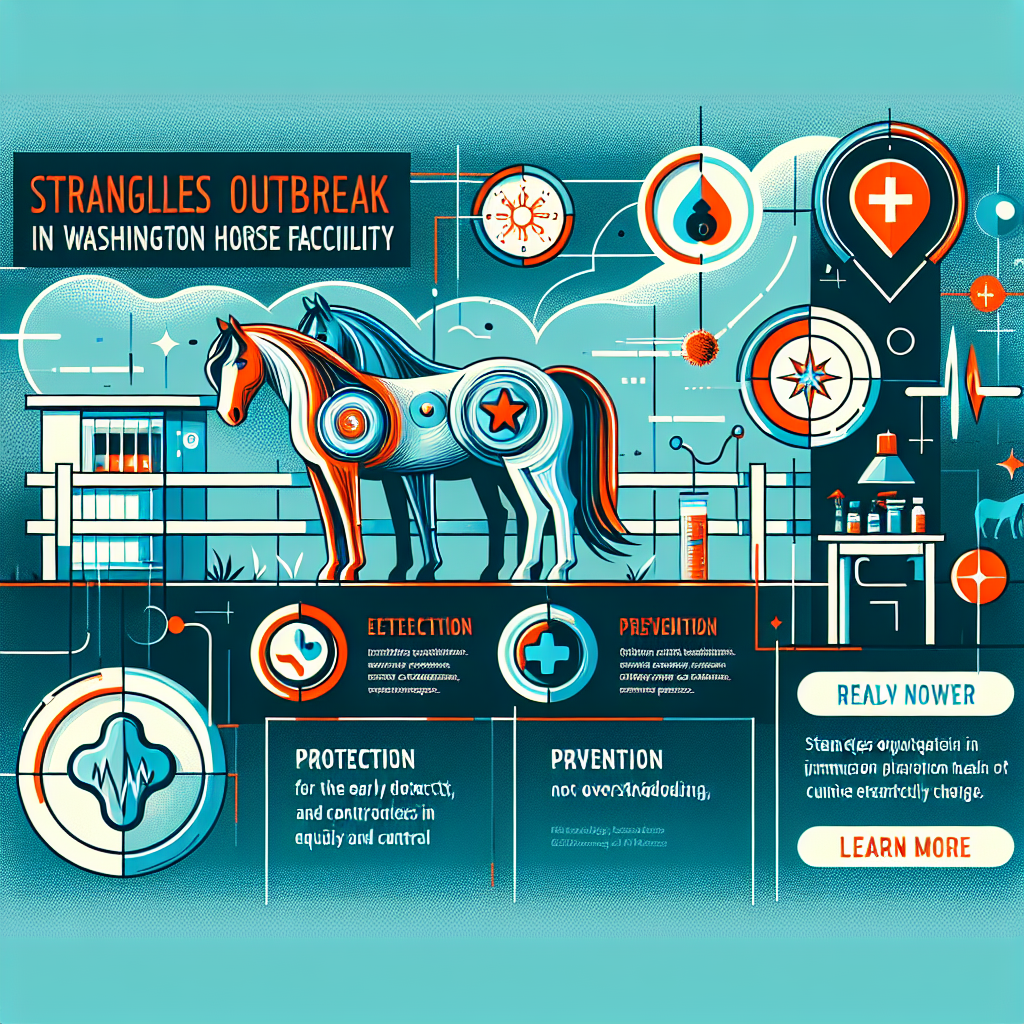Facing Strangles: Equine Disease Breakout at Washington Boarding Facility
The equine community is abuzz lately, following the revelation about an outbreak of strangles, one of the most contagious diseases in horses, at a boarding facility in Spokane County, Washington. This incident is a sober reminder about the importance of disease prevention and control in managing horse health. Early detection, adequate isolation, and scientifically-backed preventive measures are still our best bets in combating strangles.
Strangles: The Unwanted Guest
Strangles is an equine illness, caused by Streptococcus equi subspecies equi. Infected horses usually demonstrate diverse symptoms like fever, swollen lymph nodes, nasal discharge, coughing, wheezing, and difficulty swallowing. In some cases, one may notice their horses exhibiting muscle swelling, or a characteristic "roaring" noise during breath intake–a clear cut sign of a strangles infection.
Strangles is not a newcomer in the world of equine diseases. Its prevalence and pattern vary across different regions. There have been outbreaks in various states in the U.S., with typical incidents reported in Texas, Florida, and California. Meanwhile, across the pond, strangles seems to have a greater presence among horses in the UK, France, and Germany.
From Suspicion to Confirmation: Diagnosing Strangles
The process of identifying strangles in horses involves diligent observation and laboratory testing. Specifically, Polymerase Chain Reaction (PCR) testing, a highly sensitive lab technique, is utilized to confirm diagnosis. This testing helps in detecting the presence of the villainous bacteria behind the outbreak.
Veterinary care for the affected horse has begun, with isolation protocols activated at the Washington boarding facility. Early detection and prompt intervention decreases the scope for the disease to spread, thereby controlling its impact on horse health.
Vaccination: A Ray of Prevention
As humans are warming up to the idea of vaccines, horses aren't far behind. Strangles also has its share of preventive vaccines available, like the popular Strangles MMA (Modified Live Virus) vaccine. However, the efficacy of these vaccines does waver, they do not cover all strains of the disease, and their effectiveness declines over time.
The Role of Facility Management and EDCC in Disease Control
Installing improved hygiene and management practices in horse-keeping facilities is the cornerstone in preventing the spread of diseases like strangles. Regular disinfecting procedures for water troughs, feeders, and other shared tools, as well as efficient biosecurity, are crucial.
Initiatives like the Equine Disease Communication Center (EDCC) play a pivotal role in managing equine diseases. The EDCC, a joint endeavor between the American Association of Equine Practitioners and the United States Department of Agriculture, shares timely and accurate information about disease outbreaks, and offers insights into prevention measures and control strategies.
The Bigger Picture
The recent case of strangles in Washington underscores the significance of disease prevention and control in the equine world. The continuity of research on regional trends of strangles, vaccine effectiveness, and enhanced management practices will provide deep-rooted knowledge and techniques to the equine community, contributing to the journey towards better horse health and welfare.
The war with strangles isn't over yet, but with adequate prevention, containment, and treatment measures, it's a fight we're certainly equipped to win.
Article information gathered from: TheHorse.com (exact URL not provided).




